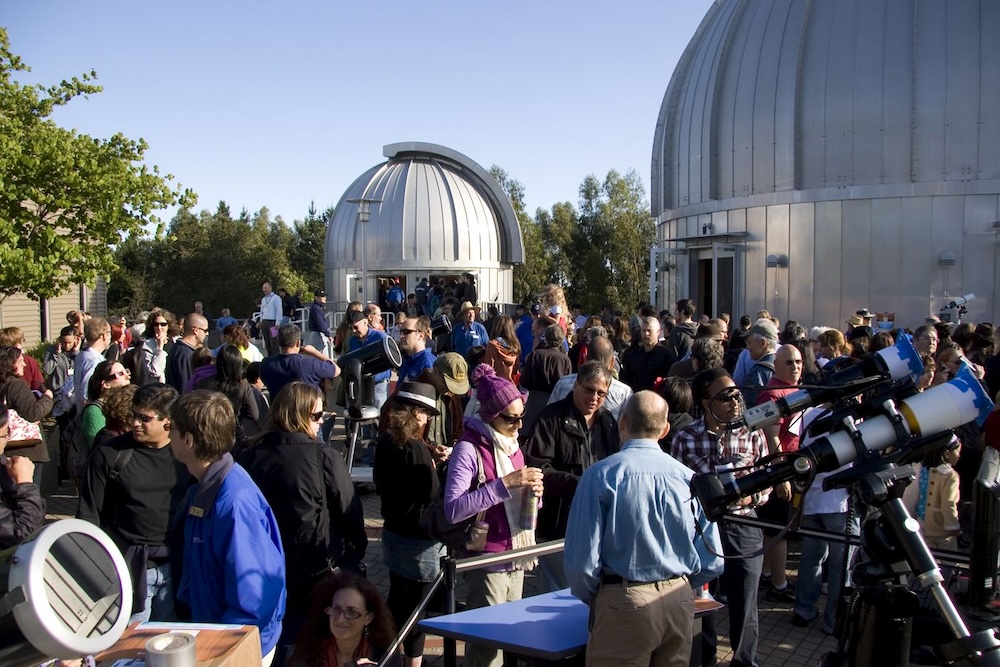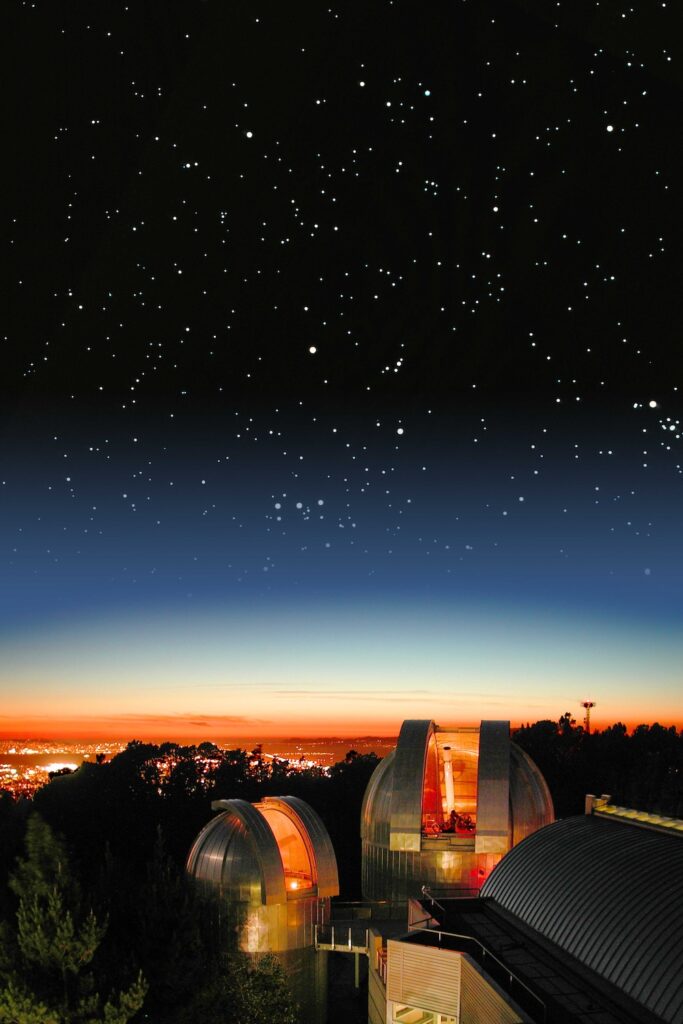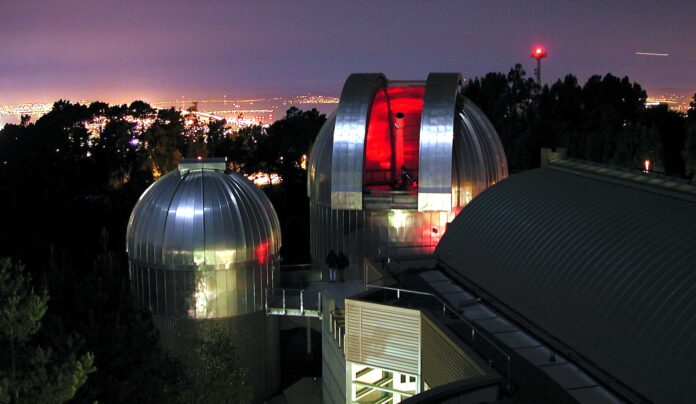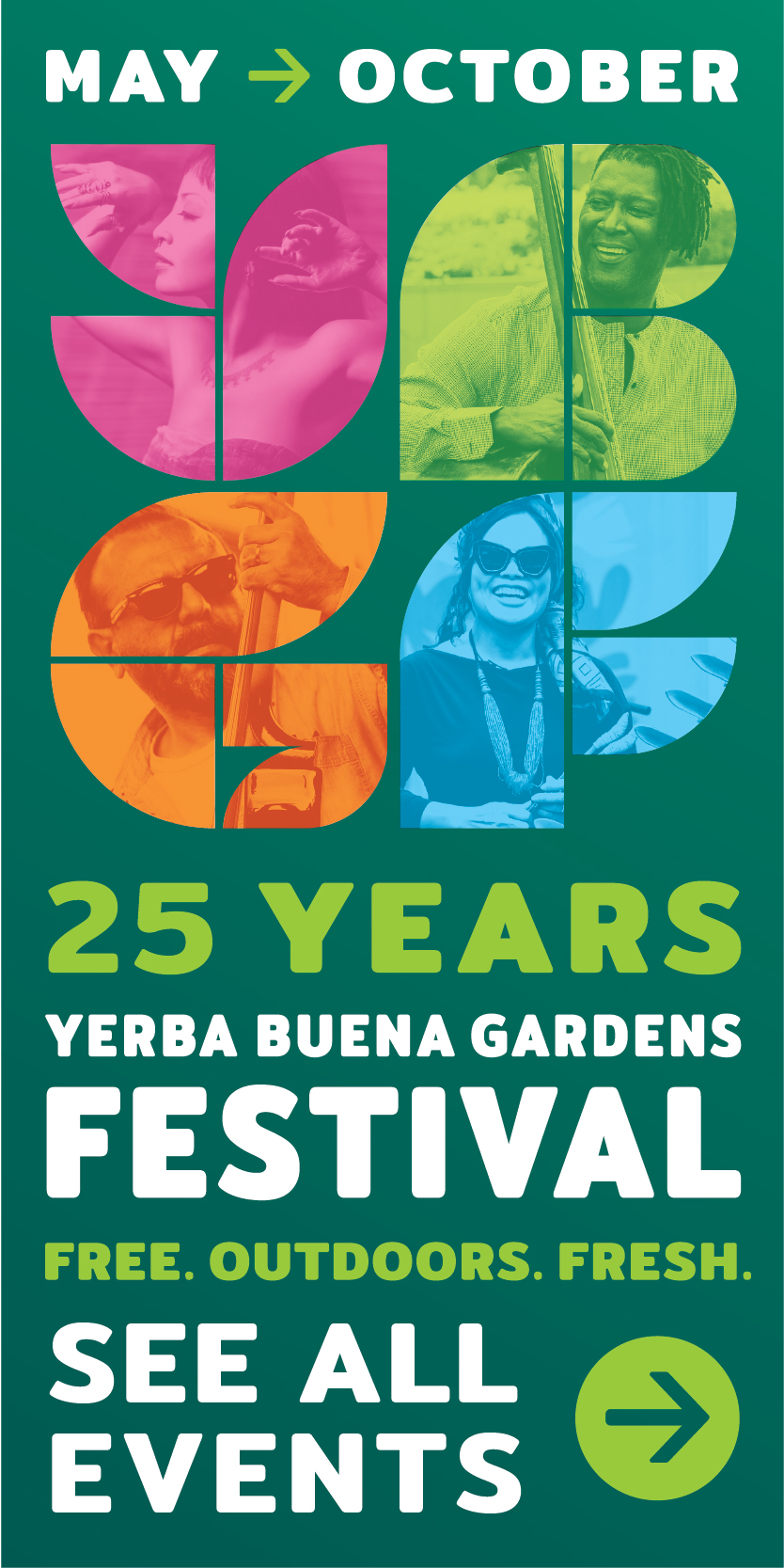The Chabot Space and Science Center has been a part of the Oakland astronomic community since 1883, when it first opened its doors downtown. It’s since moved sites a few times, and its metallic domes are now perched 1500 feet above the Bay, atop 13 acres in the appropriately natural setting of Oakland’s Redwood Regional Park. Rest assured, it has hung onto its interstellar mission of fostering our relationship to both the galaxies above our heads and the flora and fauna of our earthy landscape.
Now, the starry-eyed have even more cause to celebrate the facility: on April 26 and 27, the Chabot Center will be celebrating the renovation of its 15,000-square-foot observation deck with a two-day gathering dubbed “From Oakland to the Stars.” The first night features a concert in the planetarium called “I’ll Show You The Night” with psychedelic emcee Amani Will/Wa Ama Ni Um and queer folk bard Brightdarkdawn. The event promises to explore our continued bond with the stars in an era of artificial illumination—and serves as apt summation for the Bay Area spirit that suffuses the Center.
Its aforementioned new deck includes an amateur astrophotography exhibit meant to get visitors’ brains going as to their own ability to document the night skies. A look through Leah, Rachel, and Nellie—the deck’s powerful resident telescopes—may well tempt you back to this, the western United States’ largest observatory complex to offer free stargazing sessions, which take place at the Chabot Center every Friday and Saturday from 7:30-10pm, weather allowing.
Visitors to the reopening can also take in a display of work by the Galaxy Explorers, the Chabot Center’s crew of teen volunteers. There’s also a tribute to the Chabot’s deceased astronomer Conrad Jung, including Jung’s documentation of the excited crowds that turned up at the Center in 2012 to watch the passage of Venus across the face of the Sun.

For more great space coasting: Check out the monthly First Fridays all-ages dance party (heads up for the Pride edition on June 6) and occasional chances for the young ones to camp out overnight at the facility for a “Cosmic Camp-In.”
At a time when our overlords seems set on dismantling US scientific leadership and access to education in general, it seems more important than ever to engage with our local knowledge-based institutions. We tapped in via an email interview with Tracy Corado, the Chabot Center’s director of exhibits and design, to talk about the past and present of this family-friendly place of learning.
48HILLS Hi Tracy. What’s the Chabot Space & Science Center’s origin story? How and when did the facility come to be located in Oakland? And does it draw on any local astronomic traditions?
TRACY CORADO Chabot Space & Science Center dates back to 1883 as the Oakland Observatory through a gift from Anthony Chabot to the City of Oakland. Originally located in downtown Oakland, the observatory provided free public telescope viewings and even served as the official timekeeping station for the entire Bay Area, using its transit telescope to measure time. It was given to the Oakland Board of Education with the promise that it would always remain free to the public and schools.
Help us save local journalism!
Every tax-deductible donation helps us grow to cover the issues that mean the most to our community. Become a 48 Hills Hero and support the only daily progressive news source in the Bay Area.
As the city expanded and electric streetlights introduced light pollution, the observatory was relocated in 1915 to a hilltop near what is now the intersection of Highway 13 and I-580. Concerns about seismic activity along the Hayward Fault led to a second move in 1999, bringing the facility to its current location in the Oakland Hills.
Chabot continues the Bay Area’s long-standing tradition of scientific exploration and education. It has deep ties to local astronomy communities, including the East Bay Astronomical Society, whose members help maintain and operate its telescopes. Chabot still offers free telescope viewings every Friday and Saturday night, weather permitting.

48HILLS How is the facility funded? How secure is that funding in these wild political times?
TRACY CORADO Cabot is supported by about 50 percent contributed income and 50 percent earned revenue.
Like all nonprofits, we’re adapting to the evolving landscape, and we are also starting to see philanthropic leaders step up in areas like science education.
48HILLS What is the importance of student and laypeople’s ability to see and interpret our skies, as is facilitated by projects like the Chabot Center’s newly renovated observation deck?
TRACY CORADO Observing the sky is a transformative experience that builds curiosity, critical thinking, and a deeper connection to the universe. I still remember the first time I saw Saturn’s rings through a telescope. It was breathtaking! Many visitors share similar moments of awe when they see the Moon’s craters or Saturn’s rings for the first time. That sense of wonder is powerful. It sparks a lifelong curiosity about the cosmos.
With the new exhibit, we’re expanding opportunities for visitors to engage with the sky above them in meaningful ways. Whether it’s through direct observation, astrophotography, or looking through our telescopes, we want to make space exploration accessible to everyone, at any time, whether it’s day, night, prime telescope viewing weather, or overcast. One of the many incredible things about astronomy is that anyone, anywhere, can participate simply by looking up.
CHABOT CENTER “FROM OAKLAND TO THE STARS” REOPENING CELEBRATION April 26 and 27. Chabot Space and Science Center, Oakl. Tickets and more info here and here.





